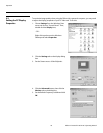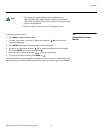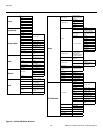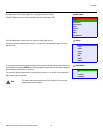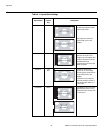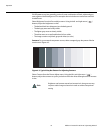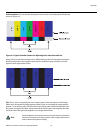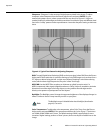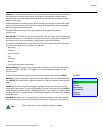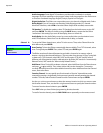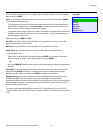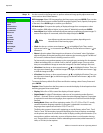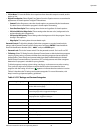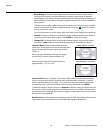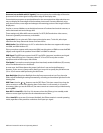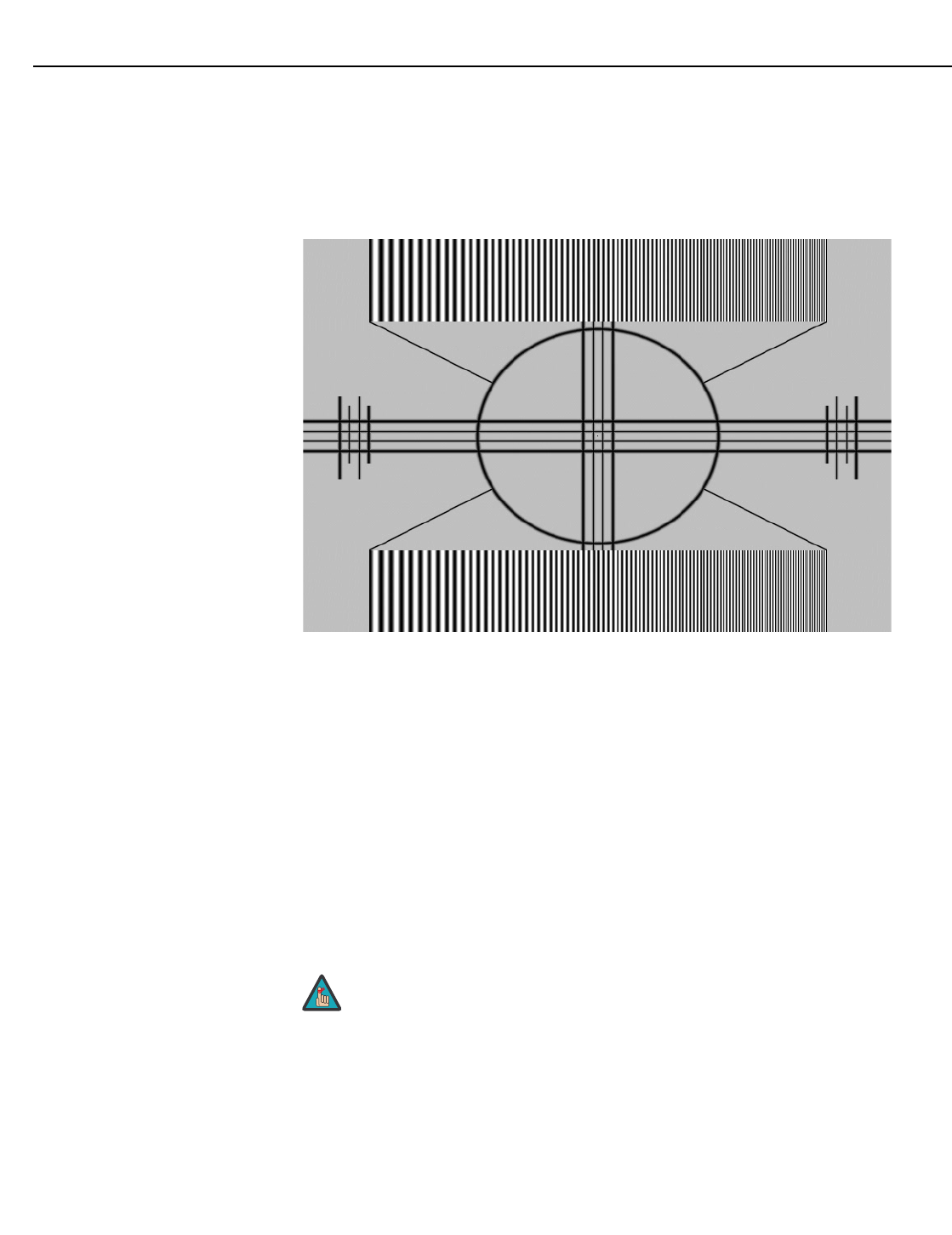
Operation
34 Vidikron VL-40 and VL-46 Owner’s Operating Manual
PRE
L
IMINAR
Y
Sharpness: “Sharpness” is the amount of high-frequency detail in the image. To adjust
sharpness, select Sharpness from the Picture Adjust menu and press ENTER. On your
external test pattern source, select a pattern like the one shown in
Figure 4-5. Adjust as
needed, looking for white edges around the transitions from black to gray and different sized
lines in the “sweep” patterns at the top and bottom. Lower the sharpness setting to eliminate
them.
Figure 4-5. Typical Test Pattern for Adjusting Sharpness
DNR: To apply Digital Noise Reduction (DNR) to the input signal, select DNR from the Picture
Adjust menu. Noise reduction is useful for clearing up noisy RGB images such as those from a
PC. Adjust as desired using the left- or right-arrow buttons, keeping in mind that reducing
noise (which reduces high frequencies) may also “soften” the image.
MPEG NR: Use the MPEG Filter to reduce or eliminate so-called “mosquito noise” in
MPEG-compressed video signals (digital broadcasts or DVDs). Adjust as needed to minimize
distortion around the edges of moving objects, moving artifacts around edges and/or
blotchy noise patterns superimposed over the objects.
Backlight: The Backlight control changes the apparent brightness of the displayed image. Its
effect is similar to that of a lamp intensity control on a projector.
Color Temperature: To adjust the color temperature, select Color Temp. from the Picture
Adjust menu and press ENTER. (Color temperature defines the “color of gray.”) The choices
are 5400K, 6500K, 8500K and Custom. The default setting, 6500K, is appropriate for most
situations. Higher settings produce a “bluer” picture; lower ones impart a reddish hue to the
image.
The Backlight control is disabled when Auto Backlight (described on
page 41) is set to On.
Note



